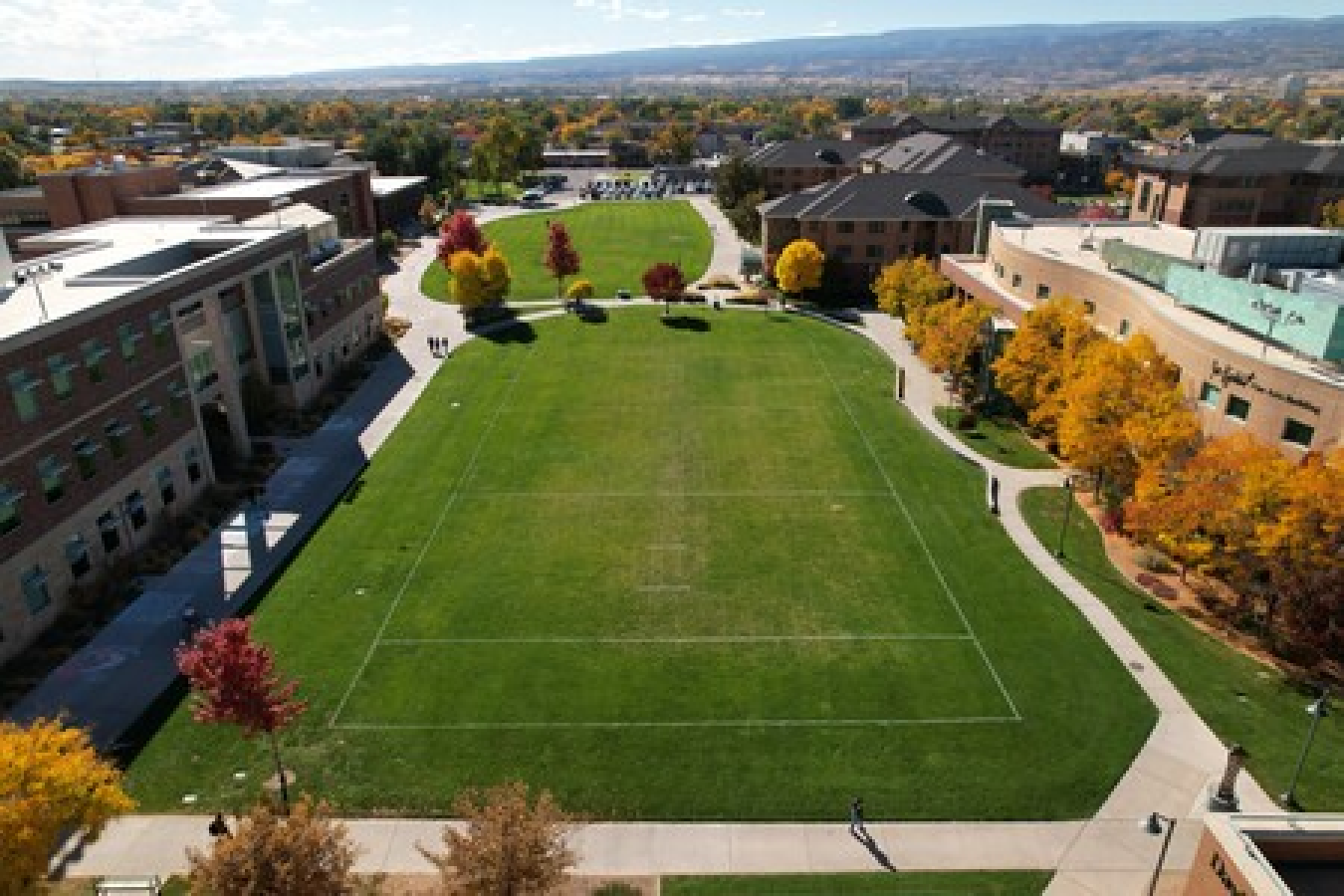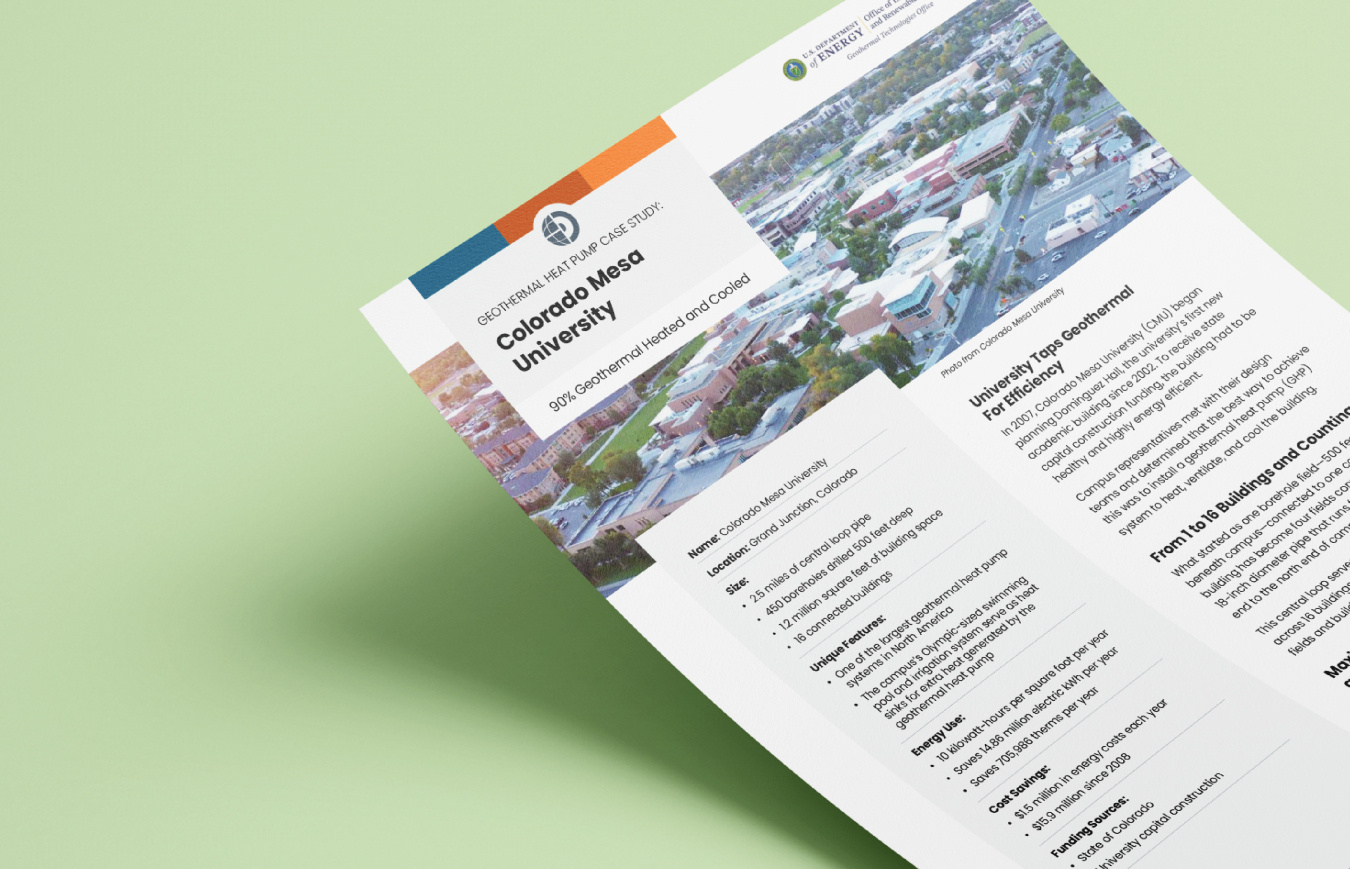
Photo from Colorado Mesa University.
Fast Facts
Location: Grand Junction, Colorado
Size: 1.2 million square feet of building space
Cost Savings: $15.9 million since 2008
Energy Use: 10 kilowatt-hours per square foot per year
Download the full case study for additional fast facts.
University Taps Geothermal For Efficiency
In 2007, Colorado Mesa University (CMU) began planning Dominguez Hall, the university’s first new academic building since 2002. To receive state capital construction funding, the building had to be healthy and highly energy efficient.
Campus representatives met with their design teams and determined that the best way to achieve this was to install a geothermal heat pump (GHP) system to heat, ventilate, and cool the building.
From One to 16 Buildings and Counting
What started as one borehole field—500 feet beneath campus—connected to one campus building has become four fields connected to an 18-inch diameter pipe that runs from the south end to the north end of campus.
This central loop serves 1.2 million square feet across 16 buildings and connects additional drill fields and buildings.

Heat Beneath Their Feet
Hidden 500 feet beneath CMUS’s athletic field at the north end of the campus is a district geothermal system. One of the largest in North America, this geothermal heat pump system heats and cools 1.2 million square feet in 16 buildings and saves the university $1.5 million in energy costs each year. Photo from CMU
Cost Benefits
In another show of commitment to the future, CMU is passing along to students the cost savings resulting from the geothermal heat pump system by offering lower tuition rates and more student scholarships.
Maximum Energy Efficiency and Year-Round Comfort
CMU’s geothermal heat pump uses cold winters and hot summers to move heating and cooling among buildings and rooms within buildings, maximizing energy efficiency and maintaining year-round comfort.
If the central loop gets too warm, the extra heat is moved to the campus’s Olympic-sized swimming pool and irrigation system, which act as heat sinks.
One of North America’s Largest Geothermal Systems
CMU’s is one of the largest geothermal heat pump systems in North America. It connects 16 buildings and provides 90% of the heating and cooling required to operate the campus.
Future funding will enable CMU to drill additional fields and connect the remaining campus buildings, comprising 800,000 square feet, to the central loop.
Committed to the Future
After the success of the first geothermal heat pump system at Dominguez Hall, the university president and staff made a commitment: Any campus building newly constructed will be connected to the geothermal system.
In another show of commitment to the future, CMU is passing along to students the cost savings resulting from the geothermal heat pump system by offering lower tuition rates and more student scholarships.
“We’re at a point where lots of U.S. building HVAC systems need to be replaced. If all we do is tear out the old and put in new old stuff, we’re going to kick this energy savings thing down the road. So instead of buying a new furnace, buy a geothermal heat pump system that will never wear out. The additional upfront cost will be paid back forever and ever after.”
Kent Marsh, Colorado Mesa University Vice President for Capital Planning and Campus Operations
Contacts:
For questions about this case study, contact Kent Marsh, kmarsh3@coloradomesa.edu.
For any website technical issues or general questions about geothermal heat pumps, contact DOE.Geothermal@ee.doe.gov.
Printable Version
Download the printable Colorado Mesa University case study or visit the Geothermal Heat Pump Case Studies page to see more examples of geothermal heat pumps in action.


